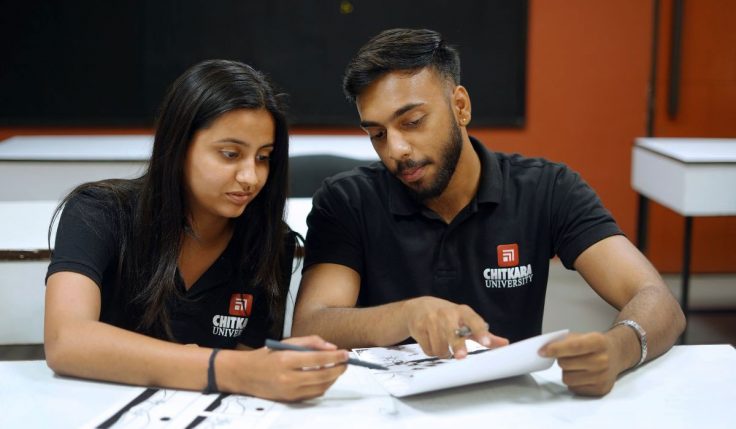Fashion designing courses have been a stepping stone for aspiring designers to enhance their skills, gain practical experience and build a successful career for themselves in designing field. With the evolution of technology, the practices in the fashion industry are transforming.
Fashion design courses aim to equip students with the technical skills and knowledge they need to thrive in a rapidly evolving industry. To build a successful career in the industry aspiring designers need to develop technical skills, an understanding of new tools and technology along with their creative skills. The evolution of technology has opened up new doors of experimentation, collaboration, and market research for professionals.
In this blog, we will explore how technology is revolutionizing fashion design courses and reshaping the industry as a whole. From 3D designing and virtual prototyping to digital textile printing, we will uncover the myriad ways in which technology is leaving an indelible mark on the fashion world.
3D designing and virtual prototyping
In the evolving landscape of fashion design, 3-D designing software has emerged as a game changer by saving valuable time and cost. They have revolutionized the way designers ideate, create, and present their designs. This software helps designers in bringing their ideas to life in a virtual world. Allowing designers to view their designs from various angles, examine details and analyze how the garment will look on a virtual model. Instead of relying on sketches, designers can view their creations in a three-dimensional space.
Thanks to 3D designing innovation, virtual prototyping emerges as an effective means of saving both time and costs significantly. The arduous task of producing physical samples for each design iteration becomes obsolete due to the advent of digital alternatives. Instead, designers can conveniently implement changes digitally while simultaneously experiencing real-time visualization of their impact. As a result, the production cycle diminishes while material waste reduces, contributing to a more sustainable fashion design practice.
Also Read: How Is Artificial Intelligence Changing the Future of Fashion
Digital Textile Printing and Pattern creation
Amidst the rapidity prevalent in our present era, digital textile printing introduces a groundbreaking transformation to fabric printing techniques for garments. This novel approach empowers designers and manufacturers with endless possibilities for bringing their artistic visions to life effortlessly.
Conventional screen printing procedures are overshadowed by incorporating highly detailed and vibrant designs directly onto fabrics. Consequently, this revolutionary method spares valuable resources and eliminates costly intricacies such as creating screens or mixing inks – culminating in a more rapid production process that leaves minimal waste behind.
The integration of digital pattern creation into fashion design courses yields substantial influence throughout the industry.
Designers now relish time savings and enhanced flexibility by crafting and manipulating designs digitally sans any necessity for tangible templates. This newfound freedom permits experimentation with various patterns, variations, and size specifications – enabling creativity to thrive remarkably! Aspiring fashion students who immerse themselves in pattern drafting software acquire priceless proficiencies that offer them an invaluable skillset for generating intricate patterns which embody accuracy flawlessly.
They can explore innovative design possibilities, easily modify practices for different sizes, and visualize how the patterns will translate into the final garment.
Also Read: Wearable Technology In Fashion
Sustainable Fashion and Technology
The fashion industry is being increasingly held accountable for its environmental impact in light of growing environmental awareness. As a result. There is a rising demand for sustainable practices to be integrated into the fashion industry. Technology has emerged as a powerful force in addressing these concerns.
Offering innovative solutions to minimize the industry’s environmental footprint. Technology plays a crucial role in enabling sustainable practices in fashion design. By using digital tools and software designers can create virtual prototypes and conduct simulations reducing the need for physical samples and minimizing material waste.
Embracing digital pattern-making and 3D design allows designers to optimize fabric utilization. Resulting in more efficient production processes and a decreased environmental impact. In terms of production. Technology offers various opportunities for sustainability.
For example.
Digital textile printing eliminates the need for water-intensive and chemical-heavy traditional printing methods. Reducing ink waste and harmful chemical release into the environment. Moreover. Automation and data-driven manufacturing technologies enable more efficient production processes that conserve resources and minimize energy consumption. Fashion designing courses now include sustainable fashion initiatives to equip students with the knowledge and skills necessary to address environmental concerns in the industry.
Conclusion
In conclusion, transforming technology has a huge impact on Fashion Design Courses. It is helping organizations to equip students with the digital skillsets they need to build a successful career in the industry.
Advancements in digital tools and sustainable practices are shaping the digital landscape. By embracing sustainability and technology, the fashion industry can build a more innovative and environmentally responsible future.
The advancements in technology are going to help drive a positive and sustainable future for the fashion industry.






